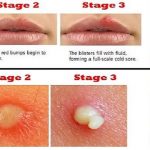miconazole nitrate – vaginal, Monistat
Medication Uses How To Use Side Effects Precautions Drug Interactions Overdose Notes Missed Dose Storage USES: This medication is used to treat vaginal yeast infections. Miconazole reduces vaginal burning, itching, and discharge that may occur with this condition. It is an azole antifungal that works by stopping the growth of yeast (fungus) that causes the infection. The vaginal product comes in 2 forms: a vaginal cream or tablet. Some products also come with a skin cream for application to the area around the outside of the vagina. Ask your doctor before using this medication for self-treatment if this is your first vaginal infection. This medication only works for vaginal fungal infections. You may have a different type of infection (such as bacterial vaginosis) and may need a different medication. If you have fever, chills, flu-like symptoms, stomach/abdominal pain, or a bad-smelling vaginal discharge, do not use this medication. Contact your doctor immediately because these may be signs of a more serious infection.
HOW TO USE: If you are using the over-the-counter product to self-treat, read all directions on the product package before using this medication. If you have any questions, consult your pharmacist. If your doctor has prescribed this medication, use it as directed. Read the Patient Information Leaflet available from your pharmacist. Consult your doctor or pharmacist if you have any questions. This product is for vaginal use only. Wash your hands before and after use. Avoid contact of this product with your eyes. If it gets into your eyes, wash them immediately with plenty of water. Call your doctor if eye irritation persists. Dosage is based on your medical condition and response to treatment. Use the medication usually once daily at bedtime for 1 to 7 nights depending on the product used, or as directed by your doctor. If you are using the single dose tablet, it may be used during the daytime or at bedtime. If using the vaginal cream, follow the package instructions on how to fill/use the applicator with the cream. Lie on your back with your knees toward your chest. Insert one applicator filled with cream into the vagina as far as it will comfortably go. Slowly press the plunger of the applicator in to apply the cream. Make sure to insert the correct cream for use inside the vagina, not the skin cream for use on the outer genital area (vulva). If using the vaginal tablet, you may use either the applicator or your finger to insert the tablet. Unwrap the tablet before use. Follow the package instructions on how to fill the applicator with the vaginal tablet. Lie on your back with your knees toward your chest. Insert the tablet or the applicator into the vagina as far as it will comfortably go. Slowly press the plunger of the applicator to release the tablet. If you have itching/burning around the outside of the vagina (vulva), apply the skin cream to that area usually twice a day for no more than 7 days. If you are using a product with only the vaginal cream, you may apply a small amount of the vaginal cream to the area. Continue to use this medication every day for the full time prescribed, even if symptoms disappear after a few days or if your menstrual period starts. Stopping the medication too soon may allow the yeast infection to return. Do not use tampons, douches, spermicides, or other vaginal products while using this medication. Unscented sanitary napkins may be used for your menstrual period or to protect your clothing from leakage of the medication. Tell your doctor if your condition does not improve after 3 days or lasts more than 7 days. Tell your doctor if your infection returns within 2 months. You may need a different or additional medication to treat your condition.
SIDE EFFECTS: See also Uses section. Headache, vaginal/urethral burning/itching/pain, or lower abdominal cramps may occur. If any of these effects persist or worsen, notify your doctor or pharmacist promptly. If your doctor has directed you to use this medication, remember that he or she has judged that the benefit to you is greater than the risk of side effects. Many people using this medication do not have serious side effects. A very serious allergic reaction to this drug is unlikely, but seek immediate medical attention if it occurs. Symptoms of a serious allergic reaction may include: rash, itching/swelling (especially of the face/tongue/throat), severe dizziness, trouble breathing. This is not a complete list of possible side effects. If you notice other effects not listed above, contact your doctor or pharmacist. In the US -Call your doctor for medical advice about side effects. You may report side effects to FDA at 1-800-FDA-1088. In Canada – Call your doctor for medical advice about side effects. You may report side effects to Health Canada at 1-866-234-2345. PRECAUTIONS: See also Uses section. Before using this medication, tell your doctor or pharmacist if you are allergic to it or to other azole antifungal agents (such as terconazole, fluconazole) or if you have any other allergies. This product may contain inactive ingredients, which can cause allergic reactions or other problems. Talk to your pharmacist for more details. If you have any of the following health problems, consult your doctor or pharmacist before using this medication: diabetes, immune system problems (such as HIV-AIDs), frequent vaginal yeast infections (more than 3 in 6 months or 4 in 1 year). Before having surgery, tell your doctor or dentist about all the products you use (including prescription drugs, nonprescription drugs, and herbal products). Ask your doctor whether you can have sexual intercourse while using this product. This product may weaken rubber products (such as latex condoms, diaphragms, cervical caps) and lead to failure. This can result in pregnancy. Therefore, do not use these products during treatment with this medication and for 3 days after treatment is over. Consult your doctor about other forms of barrier protection/birth control (such as polyurethane condoms) during this time. Do not use this medication for self-treatment if you are pregnant. During pregnancy, this medication should be used only when clearly needed. If you are pregnant, follow your doctor’s instructions on how to use the applicator to insert this medication. Discuss the risks and benefits with your doctor. It is not known whether this drug passes into breast milk. Consult your doctor before breast-feeding. DRUG INTERACTIONS: The effects of some drugs can change if you take other drugs or herbal products at the same time. This can increase your risk for serious side effects or may cause your medications not to work correctly. These drug interactions are possible, but do not always occur. Your doctor or pharmacist can often prevent or manage interactions by changing how you use your medications or by close monitoring. To help your doctor and pharmacist give you the best care, be sure to tell your doctor and pharmacist about all the products you use (including prescription drugs, nonprescription drugs, and herbal products) before starting treatment with this product. While using this product, do not start, stop, or change the dosage of any other medicines you are using without your doctor’s approval. Some products that may interact with this drug include: warfarin. Some products that may increase the risk of vaginal yeast infections include antibiotics, corticosteroids (such as prednisone), and drugs that suppress the immune system (such as cyclosporine, methotrexate). This document does not contain all possible drug interactions. Keep a list of all the products you use. Share this list with your doctor and pharmacist to lessen your risk for serious medication problems.
QUESTION
OVERDOSE: This medicine may be harmful if swallowed. If swallowing or overdose is suspected, contact a poison control center or emergency room immediately. US residents can call their local poison control center at 1-800-222-1222. Canada residents can call a provincial poison control center. NOTES: Do not share this medication with others. To help prevent vaginal yeast infections, dry the genital area thoroughly after showering, bathing, or swimming. Avoid wearing tight jeans, nylon underwear, pantyhose, a wet bathing suit, or damp/sweaty exercise clothes for long periods. Wear cotton underwear, and change your underwear daily. If your sexual partner experiences symptoms, they should contact their doctor immediately. MISSED DOSE: If you miss a dose, use it as soon as you remember. If it is near the time of the next dose, skip the missed dose and resume your usual dosing schedule. Do not double the dose to catch up. STORAGE: Store at room temperature between 59-86 degrees F (15-30 degrees C) away from light and moisture. Do not store in the bathroom. Keep all medicines away from children and pets. Do not flush medications down the toilet or pour them into a drain unless instructed to do so. Properly discard this product when it is expired or no longer needed. Consult your pharmacist or local waste disposal company for more details about how to safely discard your product. Information last revised March 2013. Copyright(c) 2013 First Databank, Inc.
Report Problems to the Food and Drug Administration
You are encouraged to report negative side effects of prescription drugs to the FDA. Visit the FDA MedWatch website or call 1-800-FDA-1088. Selected from data included with permission and copyrighted by First Databank, Inc. This copyrighted material has been downloaded from a licensed data provider and is not for distribution, except as may be authorized by the applicable terms of use.
CONDITIONS OF USE: The information in this database is intended to supplement, not substitute for, the expertise and judgment of healthcare professionals. The information is not intended to cover all possible uses, directions, precautions, drug interactions or adverse effects, nor should it be construed to indicate that use of particular drug is safe, appropriate or effective for you or anyone else. A healthcare professional should be consulted before taking any drug, changing any diet or commencing or discontinuing any course of treatment.
CONDITIONS OF USE: The information in this database is intended to supplement, not substitute for, the expertise and judgment of healthcare professionals. The information is not intended to cover all possible uses, directions, precautions, drug interactions or adverse effects, nor should it be construed to indicate that use of particular drug is safe, appropriate or effective for you or anyone else. A healthcare professional should be consulted before taking any drug, changing any diet or commencing or discontinuing any course of treatment.


